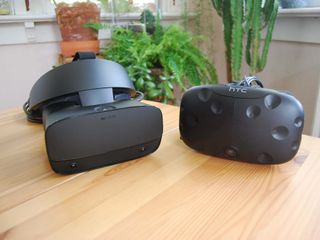
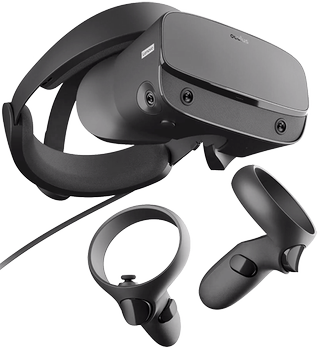
PC-Based Oculus
The Oculus Rift S is a replacement for the original Rift CV1, and it too requires a connected PC to power it. Compared to the HTC Vive, it uses a higher-res LCD display, but it has a lower 80Hz refresh rate, and it doesn't have manual interpupillary distance (IPD) adjustment. You get full access to original Rift titles, and there's no need for external sensors thanks to an Insight tracking system with five built-in sensors.
For
- No external sensors required
- Touch controllers are excellent
- Higher-resolution display
- No need for extra headphones
Against
- No manual IPD adjustment
- Colors not as deep on LCD display
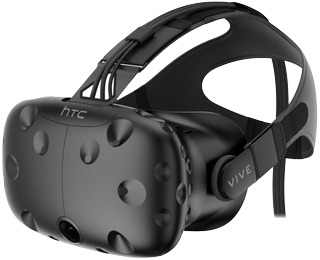
Premium VR headset
The HTC Vive has proven itself since its release in 2016, bringing AMOLED dual displays with 90Hz refresh rate, outstanding tracking thanks to external lighthouse base stations, and plenty of official and third-party accessories. However, new models are hard to find or overly expensive because it's been discontinued, and it's not nearly as portable due to the external sensor requirement.
For
- AMOLED displays with deep color
- Nearly flawless tracking
- 90Hz refresh rate
- Tons of available accessories
- Official wireless adapter available
Against
- Not as portable or mobile
- Availability is dwindling
These two PC-powered VR headsets have a lot in common, and you should ultimately get a similar experience with either headset that includes a ton of content and quality room-scale movement. However, some differences might sway you one way or the other when making a final decision about which to buy.
Oculus Rift S vs. HTC Vive: Tech specs
Both of these VR headsets are available for purchase right now. Here's a breakdown of the tech specs that make up each system.
| Header Cell - Column 0 | Oculus Rift S | HTC Vive |
|---|---|---|
| Display resolution | 2560 x 1440 Single LCD | 2160 x 1200 (combined) Dual AMOLED |
| Refresh rate | 80Hz | 90Hz |
| IPD | Software | Manual |
| Audio | Integrated 3.5mm jack | 3.5mm jack |
| Tracking | Oculus Insight 5 internal | Lighthouse 2 external |
| Degrees of freedom (DoF) | 6 DoF | 6 DoF |
| Controllers | Updated Touch | Vive Wands |
| Cable | 5 meters DisplayPort 1.2 USB-A 3.0 | 5 meters HDMI USB-A 2.0 |
Oculus Rift S vs. HTC Vive: Display
The Rift S's display has been changed since the Rift CV1, ditching the deep colors of dual OLED for a single LCD display with a backlight. Each eye sees a resolution of 1280x1440 — 2560x1440 combined — which is higher than the Vive's combined resolution of 2160x1200 (1080x1200 for each eye). While the Rift S has a higher resolution and should show a lot less screen-door effect (SDE) for a clearer picture without as much of a grid over what you're seeing, it has a lower 80Hz refresh rate and won't quite have the same contrast as is seen with an AMOLED display. If you enjoy a lot of games with a black background, like Elite Dangerous, the Vive is probably better suited as you'll get a truer color.
One of the biggest complaints we've seen stemming from new Rift S users is the lack of manually adjustable interpupillary distance (IPD). IPD is handled by software on the Rift S, and if your eyes don't fall in an average spacing distance, you will have a tougher time finding a perfect view. The Vive, on the other hand, has a physical IPD knob on the side that offers more control, allowing for a better chance of achieving a perfect view even if your eyes have uncommon spacing.
Oculus Rift S vs. HTC Vive Design
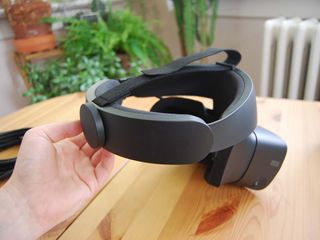
The HTC Vive comes stock with an adjustable head strap that sort of holds the head-mounted display (HMD) against your face and can be adjusted with Velcro. It does not include built-in audio (there's a 3.5mm audio jack for third-party headphones) though you can splurge and pick up an HTC Deluxe Audio Strap that has an adjustment dial on the back for easy fitting and built-in headphones. We've used the stock Vive strap for years and haven't had any issues, but if you prefer something closer to a Windows Mixed Reality (WMR) design with a halo headband that the HMD sort of hangs off of, the Rift S is probably more your speed.
Oculus teamed up with Lenovo — which has its own WMR headset — to design the Rift S, and the influence is apparent. A halo headband with an adjustment dial on the back sits securely over your head, and the HMD, which can be moved in and out to get a tight fit, sits against your face. There's still a band that runs along the top of your head to keep it from slipping down.
The Vive has a single camera on its front that can be used to see the world around you while in VR, but it's not used for any controller tracking. The Rift S is overall less bulky despite having a total of five sensors that make up its Insight tracking system, with two on the front, two on the side, and one on the top. These can also be used to see the real world around you, which is handy if you need to quickly use a keyboard and mouse or see who's tapping you on the shoulder to get your attention.
Get the Windows Central Newsletter
All the latest news, reviews, and guides for Windows and Xbox diehards.
Oculus Rift S vs. HTC Vive: PC requirements
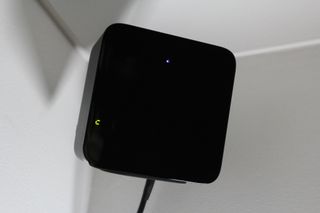
Both the Rift S and Vive require a tether back to a PC, and while you can get VR running on a lot of systems, you're only going to have a good time if your PC hits specific requirements. Recommended PC requirements are about the same across both the Rift S and Vive.
| Header Cell - Column 0 | Oculus Rift S | HTC Vive |
|---|---|---|
| Processor | Intel Core i5-4590 AMD Ryzen 5 1500X (equivalent or better) | Intel Core i5-4590 AMD FX 8350 (equivalent or better) |
| Graphics | NVIDIA GTX 1060 AMD Radeon RX 480 (equivalent or better) | NVIDIA GTX 1060 AMD Radeon RX 480 (equivalent or better) |
| RAM | 8GB or more | 4GB of more |
| Video output | DisplayPort 1.2 | HDMI 1.4 or DisplayPort 1.2 |
| USB | USB-A 3.0 | USB-A 2.0 |
Most people with a gaming PC with dedicated graphics should have no issue with the 8GB of RAM for the Rift S (the Vive is going to run much better with 8GB as well), and for the Rift S, you also have to be sure you have a DisplayPort and USB-A 3.0 output. The Vive's Lighthouses do require Bluetooth to communicate with the PC, but again that shouldn't be an issue for most modern PCs.
If you're worried that your current rig won't be able to handle the demands of a quality VR experience, have a look at our roundup of the best desktop PCs for VR. If you'd rather have something you can easily carry with you, we've also collected the best gaming laptops available now.
The Vive also has an official wireless adapter available for purchase, which removes the need for a cable back to your PC. There's also a third-party TPCast wireless adapter available for the Vive, and also for the original Rift CV1. However, there is not yet a wireless adapter made for the Rift S.
Oculus Rift S vs. HTC Vive: Tracking and controllers
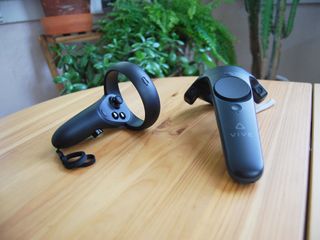
The Rift S made a significant change to its tracking system, eschewing external sensors for built-in sensors known as Oculus Insight. Insight scans your surroundings and identifies physical objects in space, and combines it with data from the headset's accelerometer and gyroscope, giving your exact positional data once per millisecond. This makes the Rift S a lot easier to set up, and you'll no doubt be enjoying VR action quicker than with the Vive, though overall tracking won't quite compare. Oculus Insight is still new and has a few bugs to work out, but it's a great feeling knowing you don't have to contend with extra cables and setup, and for the most part, you shouldn't notice the lack of external sensors.
The Vive uses two Lighthouses (which require an AC power source) that are mounted on the fringe of your VR space to track headset and motion controllers, often called Wands. They require a bit more time to set up, and they lend themselves more to a permanent situation, though in our experience, tracking is nearly flawless.
The Vive's Wands are stellar pieces of hardware. However, they don't offer the same capacitive touch capabilities as the new Oculus Touch controllers that ship with the Rift S. Which controllers suit you better will likely come down to personal preference. However, know that both systems are going to deliver a full room-scale experience with six degrees of freedom, allowing you to move naturally in real space and have it translated into a virtual world.
Oculus Rift S vs. HTC Vive: Availability
The HTC Vive was replaced by the readily-available Vive Cosmos, but many people still want to get their hands on the original piece of hardware. Unfortunately, most vendors have jacked up the price of the original Vive far above where it should be, at least for new models (which are nearly impossible to find).
One of the last places to find a Vive is seemingly eBay, which has a large collection of used HTC Vive models for sale. Note that they don't come with the same pre-owned certification you got when buying straight from the Vive website.
The Rift S is also in low quantity and priced well more than where it should be. If you're looking for an alternative, the Oculus Quest might be easier to find and offers a similar experience at a lower price point.
Oculus Rift S is an affordable way to get into PC VR
The Rift S is a PC-powered VR system that does not require external sensors, making it a better choice for those who plan on bringing VR with them wherever they go. It has been redesigned with a halo headband, it features integrated audio, and you have access to the ever-growing collection of games from the Oculus Store (including many exclusives) and from Steam. The LCD display might not offer the same deep color as the AMOLED displays in the Vive, and tracking might not be quite the same (though still good), but it's more readily available than the Vive, which will no doubt be a massive deal for a lot of people.

The next evolution of the Rift brings improved lenses, a display with a higher pixel count than the original, and a redesigned head strap and tracking system, but you're still tethered to a PC.
HTC Vive offers premium PC VR with external tracking
The Vive has been around for a while now, and it has proven itself as a premium VR system. It's not as easy to pack up and transport as the Rift S due to external lighthouses. Still, tracking is nearly flawless, it has dual AMOLED displays with deep color, it has a higher refresh rate, and there are a ton of official accessories available, including a wireless adapter, that can take your VR experience to the next level. You also have access to an extensive VR library on Steam and Viveport. If you don't mind a used model, it should serve you well.

The tried-and-true Vive is an excellent VR headset for those who don't mind external sensors and who can take advantage of a ton of accessories, including a wireless adapter. It is becoming very hard to find, though, which will no doubt play a factor in your final decision.

Cale Hunt brings to Windows Central more than eight years of experience writing about laptops, PCs, accessories, games, and beyond. If it runs Windows or in some way complements the hardware, there’s a good chance he knows about it, has written about it, or is already busy testing it.
